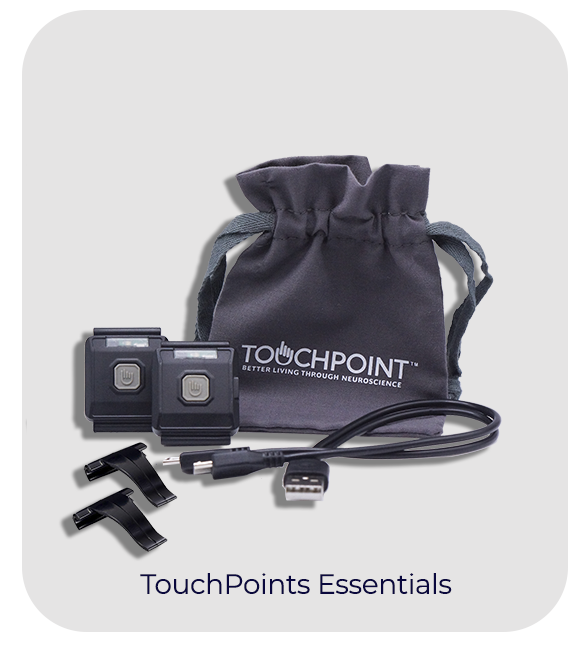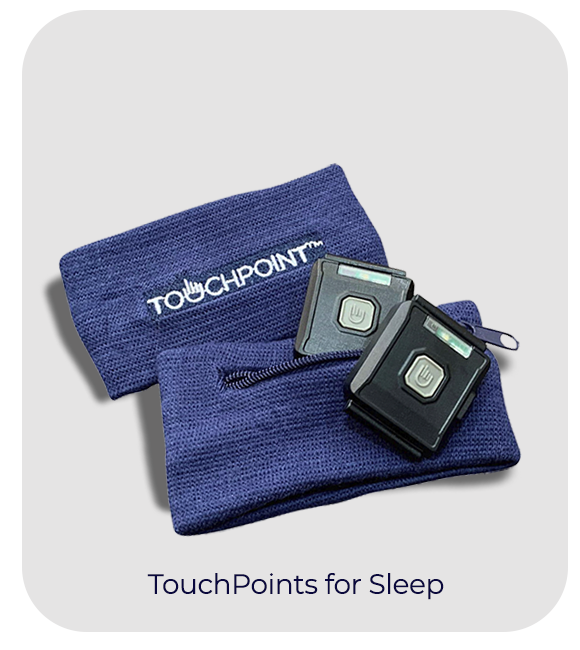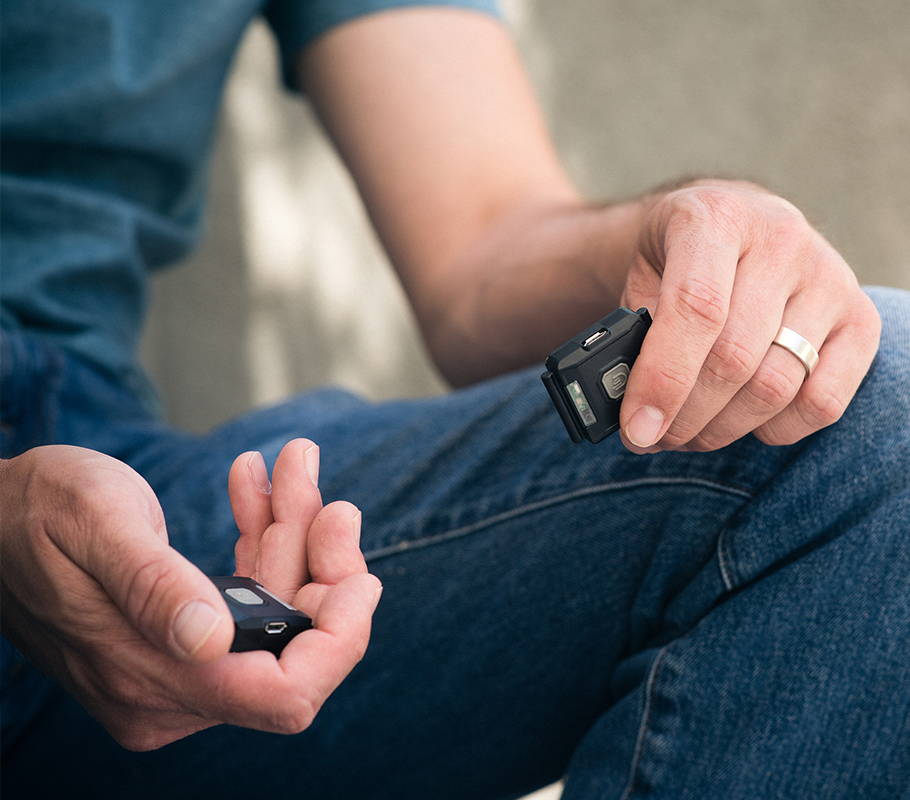Encourage clients to wear TouchPoints™ from the start to reduce stress during the recall of past events. This helps minimize cognitive and physiological distress, leading to a more efficient resolution.
Elevate Your EMDR Practice with TouchPoints
Improve Patient Outcomes with BLAST (Bi-Lateral Alternating Stimulation Tactile) Technology
WIRELESS BLAST TECHNOLOGY
As a therapist, you understand the benefits of bi-lateral stimulation. Our TouchPoints devices, embedded with BLAST (Bi-Lateral Alternating Stimulation Tactile), take your practice to the next level. Explore the possibilities of offering bi-lateral stimulation in-home with the flexibility of TouchPoints.
Concerned about dissociation?
TouchPoints have been used over 3 million times with no reported incidents of increased dissociation. In fact, the use of BLAST technology during Phase 1 can help your patients calm down, adding desensitization to their experience.
simple, convienient, effective
Say goodbye to bulky wired devices. TouchPoints are wireless, offer different speeds, and recharge effortlessly with a micro-USB cable.
No need for direct skin contact - they work in pockets, socks, or clipped to clothing.
Free up your patients' hands during sessions, enhancing the therapeutic experience.

BLAST IS PROVEN TO:
Improve memory retrieval
Promote relaxation
reduce eeg amplitude
THERAPIST EXCLUSIVE OFFER
Get 50% Off a Set of Touchpoints
Get the opportunity to try our stress-relieving technology firsthand with our Therapist Demo Program. We know you'll see the difference in the ease of use and impact on your patients.
Join our 60-day Therapist Demo Program and get 50% off a set of TouchPoints to try yourself or with your patients. If you join our Wholesale Program, we will refund your initial purchase. If not, you can keep the set of TouchPoints at this deeply discounted rate.
Quantitative Electroencephalogram Data
Our study involving quantitative electroencephalogram data clearly shows a reduction in brain wave activity in areas associated with anxiety (beta waves). TouchPoints’ patented BLAST (bi-lateral alternating stimulation-tactile technology) alters the body’s “fight or flight” response caused by stress. The wearables emit vibrations that disengage your standard stress response which can impact your performance and health.
And the results have shown to be life changing. This unique process of shifting from one brain area to another has been proven to create new behavior patterns that lessen your reaction to stress over time.
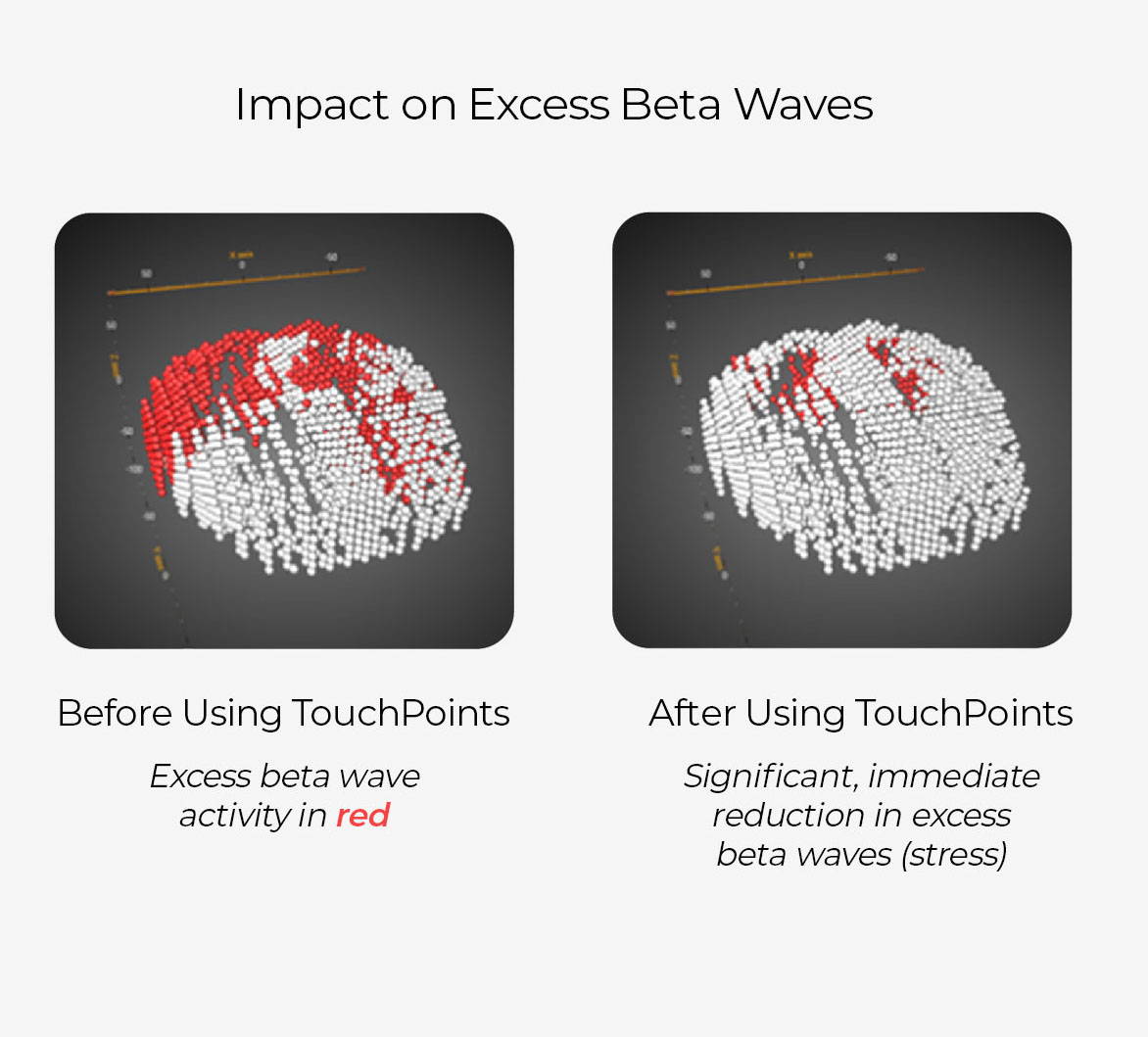
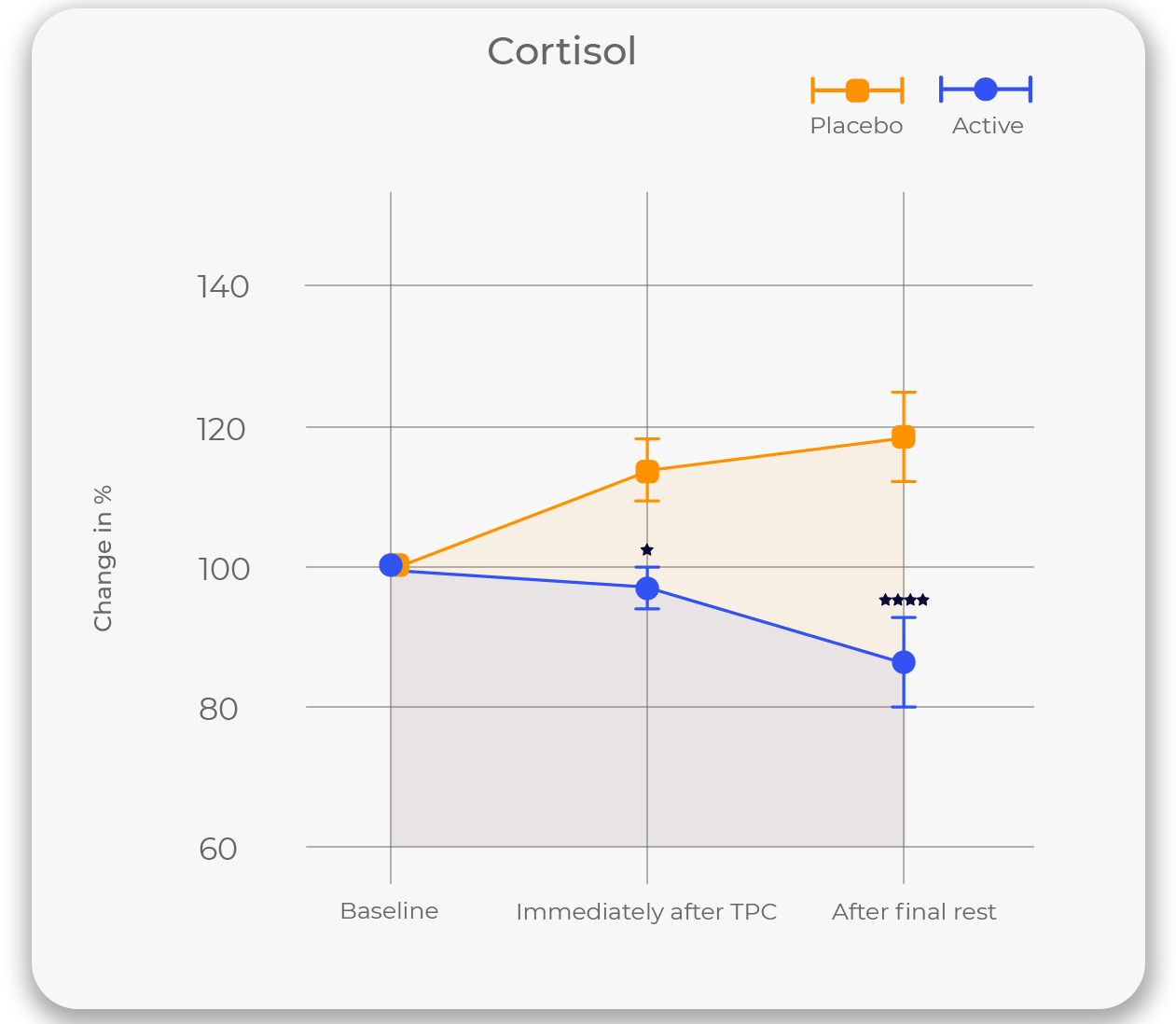
IMPACT OF TOUCHPOINTS ON ATHLETES
Effect Of Bilateral Alternating Somatosensory Stimulation On Reducing Stress-Related Cortisol
This triple blind placebo-controlled trial with athletes showed TouchPoints stabilized cortisol levels during stressful events and reduced the level of stress points even when cortisol traditionally spikes.
WHAT CLINicians ARE SAYING
USE OF TOUCHPOINTS IN EMDR THERAPY
TouchPoints™ are a wearable BLAST device partially based on the principles of EMDR therapy and can be used to assist in EMDR therapy. EMDR involves a 3-pronged approach, focusing on memories, present disturbances, and future actions to reprocess a client’s memories/experiences causing distress.
WHERE TO WEAR
There are lots of ways to wear TouchPoints, as long as you place one on the right and one on the left side of your body.
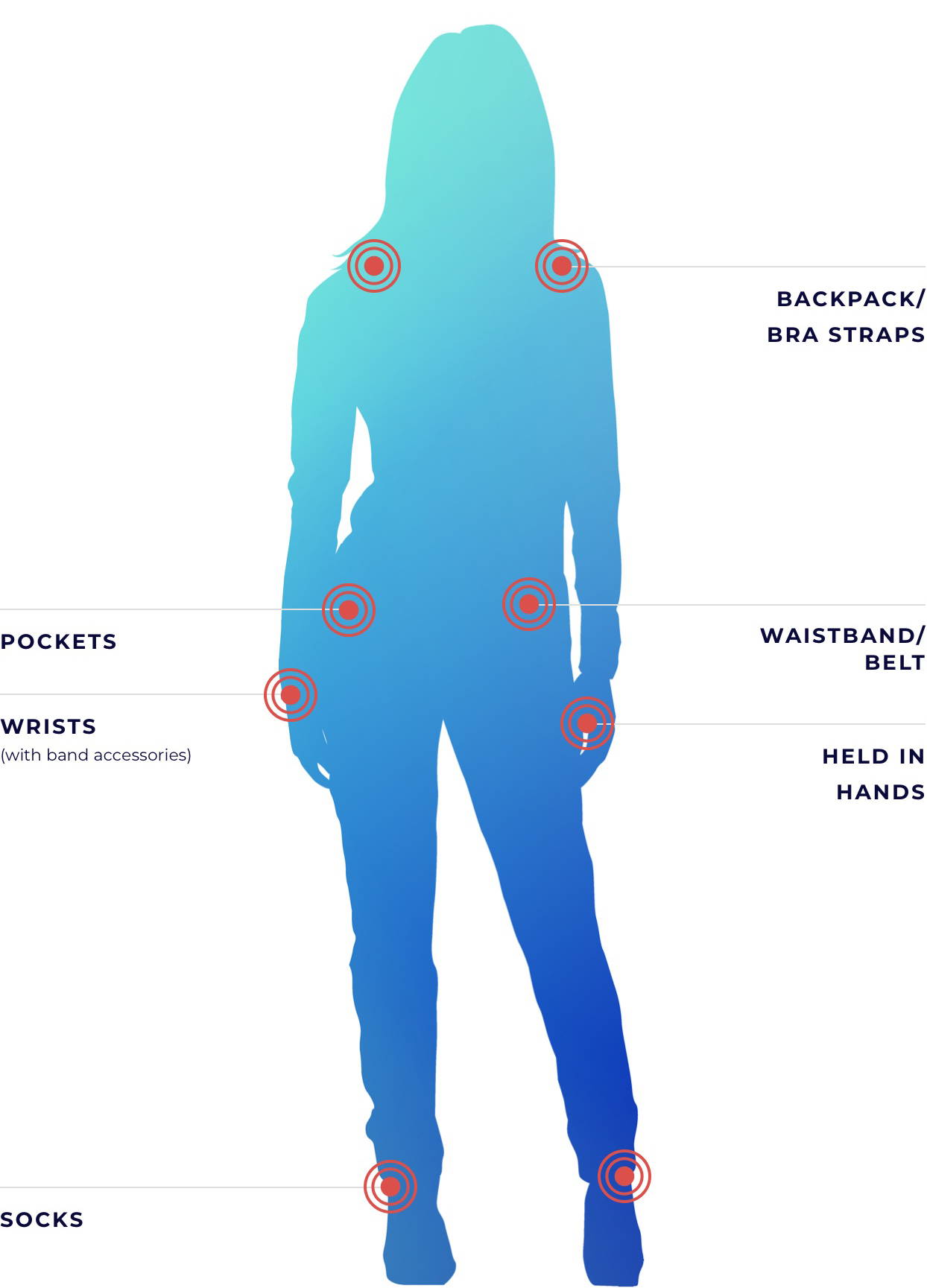
Facilitating the EMDR Process:

USE DURING THERAPEUTIC EMDR SESSIONS:
TouchPoints can be used as an adjunctive therapy to reduce physiologic arousal and distress, facilitating the resolution of cognitive distress.

SELF-DIRECTED USE OUTSIDE OF EMDR THERAPY SESSIONS
TouchPoints can be used as a self-directed wearable to deliver bilateral stimulation, reducing negative symptoms associated with triggers.
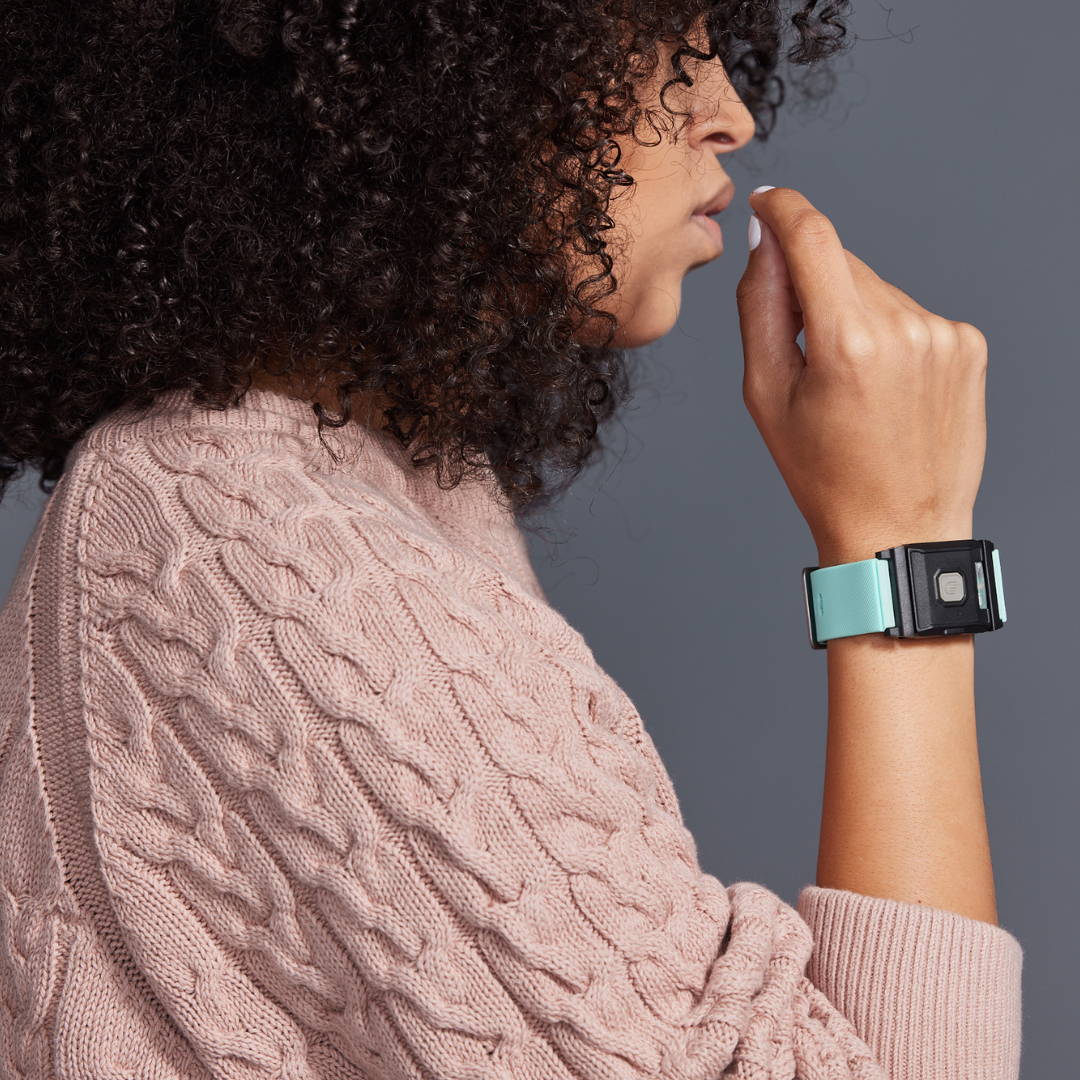
TouchPoints and "Tappers" - Emotional Freedom Technique (EFT)
TouchPoints have similarities with "tappers"/EFT but have important differences. While EFT combines psychological methods from CBT and exposure therapy with acupressure points, TouchPoints' BLAST technology provides a more complex action on higher cortical centers.

Dissociation in EMDR - TouchPoints
Identifying patients with dissociative qualities is crucial in EMDR treatment. TouchPoints can help minimize the risk of regression in patients with DID through special modifications to the EMDR protocol.
How to Use TouchPoints During
an EMDR Therapy Session
EMDR therapy is divided into 8 discrete phases. Below we will discuss specifically how TouchPoints™ can be used to assist during each phase.
PHASE 1: HISTORY TAKING
PHASE 2: PREPARATION
Use TouchPoints™ during this phase to reduce stress associated with the EMDR process, fostering a trusting therapeutic relationship and instilling confidence in calming techniques.
PHASE 3: ASSESSMENT
Wear TouchPoints™ to keep physiological distress minimal, increasing the patient’s confidence in the new positive belief.
PHASE 4: DESENSITIZATION
As a wearable device, TouchPoints™ can be used outside of EMDR sessions to accelerate the desensitization process, reducing stress associated with triggers.
PHASE 5-8: INSTALLATION, BODY SCAN, CLOSURE, RE-EVALUATION
TouchPoints™ throughout these phases to maintain continuity and reduce residual physiological distress, facilitating target resolution and potentially shortening treatment time.
Encyclopedia of Uses
There are dozens of ways to use TouchPoints as an adjunct to EMDR. Below are just a few examples. To explore the full list, visit the Encyclopedia of Uses.
Therapists Using Bi-lateral Stimulation Facebook Forum

Are you currently using or exploring the use of bi-lateral stimulation in your practice? Connect with other professionals and directly share your experience and questions with a group of your peers.
